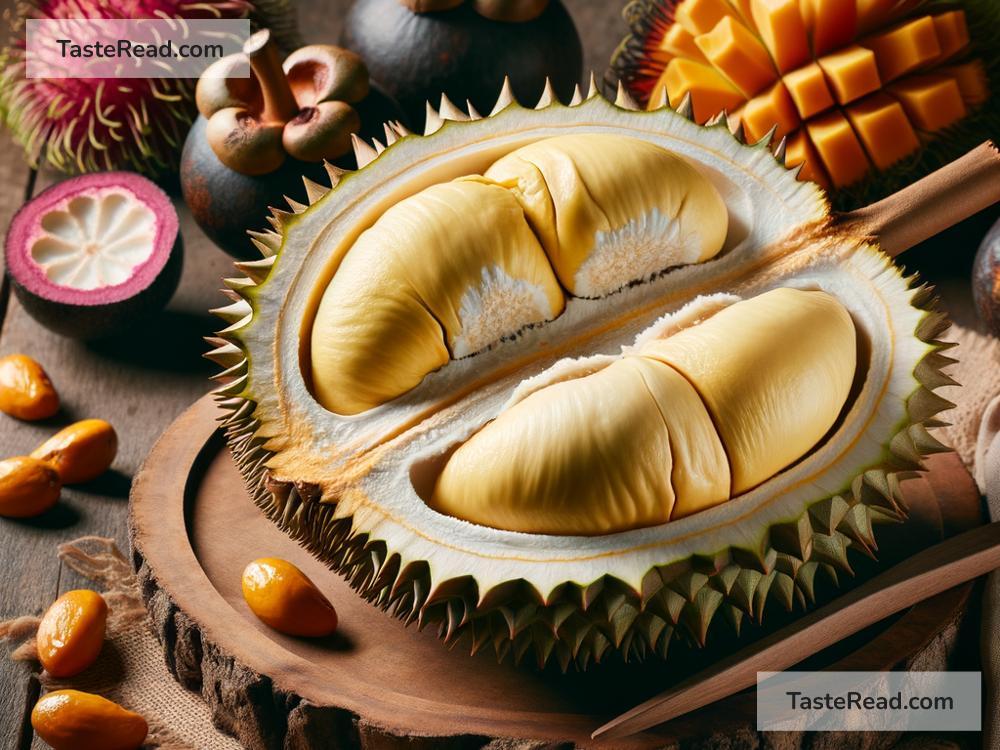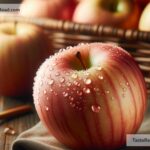The Science Behind the Creamy Texture of Durian
Durian is known as the “King of Fruits” in many parts of Southeast Asia. While some people adore its creamy texture and unique flavor, others turn away because of its strong smell. Whether you love it or hate it, one thing is certain: durian’s texture is something special. It’s smooth, rich, and custard-like, melting in your mouth with every bite. But why is durian creamy? What makes this exotic fruit stand out in terms of texture? Let’s dive into the science behind durian’s creamy magic—explained in simple words.
What Makes Durian Creamy?
Durian owes its creamy texture primarily to the mix of water, fats, proteins, and sugars inside the fruit. A balance between these components creates its soft, smooth consistency. When you scoop out its flesh, you’ll notice it feels moist but not watery and firm yet not hard—similar to a rich custard.
The creamy feel of durian comes from the microscopic structure of its cells. In simple terms, durian is packed with tiny water-filled sacs surrounded by natural fats. This combination mimics the consistency of foods like buttercream or yogurt, which are also smooth and silky because of their water-fat structure.
The Role of Fats
One of the secrets behind durian’s creaminess lies in its relatively high fat content. Many fruits, like apples or oranges, are low in fat, which makes them feel more crisp or juicy. Durian is different. It contains higher levels of natural fats, especially in certain varieties like Musang King or Monthong. These fats contribute to its rich, fatty mouthfeel, which is why eating durian can feel indulgent, like enjoying a dessert.
Interestingly, these fats are “good fats” for your body—mostly unsaturated fats, similar to what you’d find in avocados or nuts. They’re smooth and soft, which is why they help create that creamy sensation in your mouth when you eat durian.
Proteins and Sugars Add to the Texture
Proteins are another important piece of the puzzle. Durian contains small amounts of natural proteins that help bind water and fat molecules together. This creates something scientists call an “emulsion,” which is a mix of two things that don’t usually blend well, like oil and water. In durian, proteins act like a glue to hold the water and fats together, making the flesh smooth rather than oily or watery.
On top of that, durian has a lot of natural sugars like fructose and glucose. These sugars don’t just make the fruit taste sweet; they also contribute to the texture by thickening the mixture. Think about honey—it’s sweet, but it’s also sticky and thick. The sugars in durian work similarly, enhancing its smooth mouthfeel.
The Role of Ripeness
Ripeness plays a big role in durian’s texture. If you’ve ever eaten an underripe durian, you know that it’s not creamy at all—it tastes firmer and less flavorful. When durian ripens, enzymes inside the fruit break down starches into sugars. These enzymes also soften the cell walls, releasing water and fats that mix together more easily, like a silky custard.
The ripening process is what transforms durian from firm and starchy to creamy, sweet, and aromatic. This is why timing is so important when eating durian—you want it at just the right stage of ripeness for that perfect texture.
A Close Look at Durian Varieties
Not all durians are equally creamy. There are over 30 known species of durian, and some are more custard-like than others. For example, varieties like Musang King and Monthong are famous for their creamy flesh. Musang King is rich in fats and sugars, which give it a butter-like consistency.
On the other hand, some wild or less popular durian species may have a firmer or drier texture. The type of durian you eat depends on its genetics, growing conditions, and ripening process.
Can Science Create Creamier Durians?
Interestingly, scientists and durian growers are working together to breed durians that are even creamier and tastier. By studying the genetic makeup of durian fruits, researchers can identify the traits that make them creamy. They can then cross-breed varieties to amplify these characteristics.
For example, growing durians in nutrient-rich soil can boost their fat and sugar content, leading to a silkier texture. Advances in agricultural science might even lead to new durian varieties with enhanced creaminess!
Why Do People Love Creamy Textures?
The creamy texture of durian isn’t just a coincidence—it’s a big reason why this fruit is so popular. People generally love creamy foods because they feel luxurious and satisfying. Think about ice cream, cheesecake, or mashed potatoes—they’re comfort foods because their texture feels rich and indulgent. Durian offers the same experience in fruit form.
The Bottom Line
The creamy texture of durian is the result of a beautiful balance between fats, proteins, sugars, and water. Ripening plays a key role in softening the flesh and enhancing the buttery consistency. Durian’s structure at the microscopic level—its water-fat emulsion—adds to its silky feel.
Whether you’re a long-time durian fan or someone curious to try it for the first time, remember that its amazing texture is nature’s handiwork, perfected through millions of years of evolution. Durian isn’t just a fruit—it’s a creamy wonder packed with science, flavor, and tradition! So the next time you enjoy durian, take a moment to appreciate the fascinating science behind that luscious bite.


